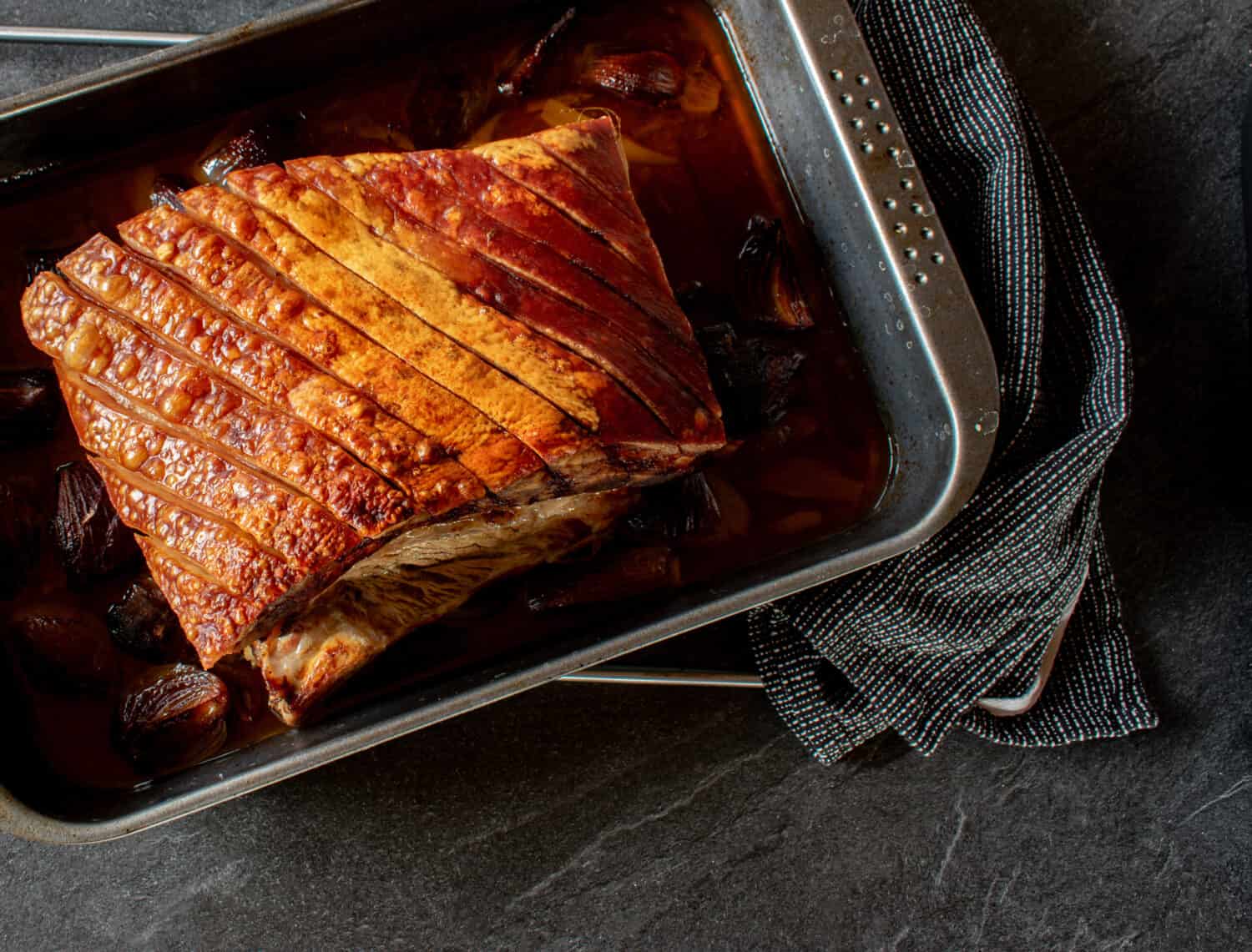Pork roast and pork shoulder differ significantly. Specifically, the term “pork roast” refers to cuts from the loin or sirloin area, although it can also refer to various cuts. Pork shoulder, also known as “Boston butt,” is cut from the shoulder area and has a marbled and flavorful appearance due to its richness in fat.
Because of the differences in taste and texture, these cuts are usually not interchangeable in recipes. To help you understand the distinctions between pork roast and pork shoulder, we will go over their pros and cons, as well as the recommended cooking methods for each. Additionally, we will provide some suggestions on how to serve each of these cuts of meat once you have prepared them. So, should you choose pork roast or pork shoulder for your next pork dish?
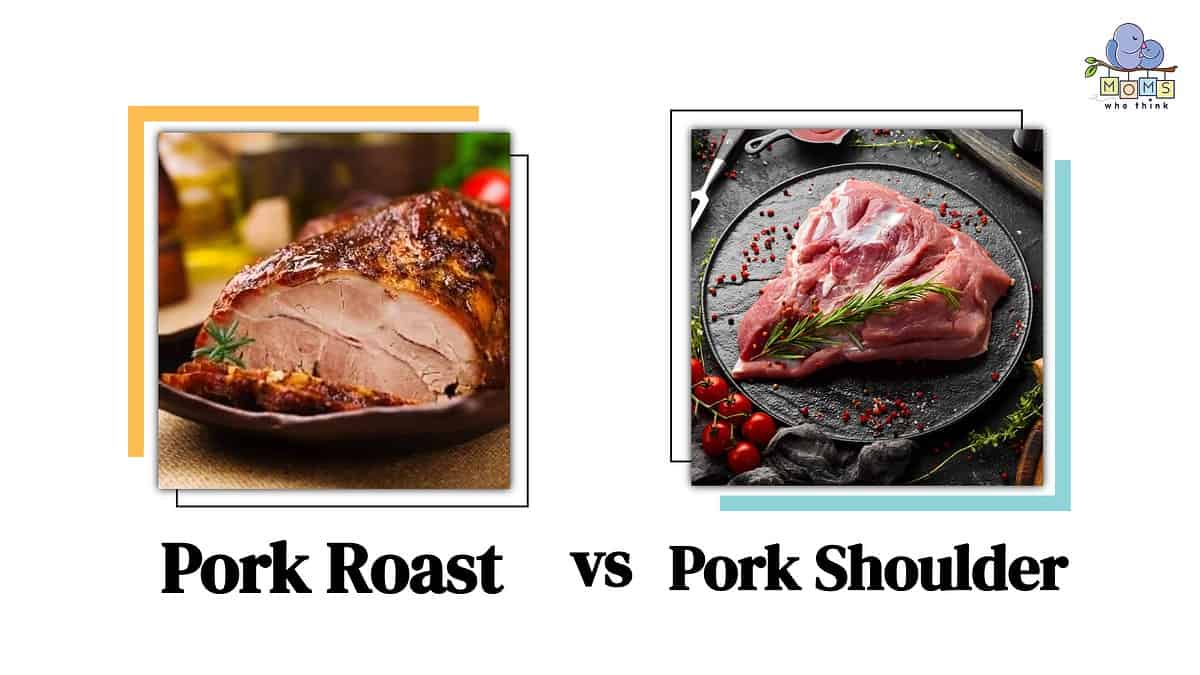
©
Pork Roast vs. Pork Shoulder: What Sets Them Apart?
The main things that set these meats apart are their tenderness, fat content, and texture. Since pork roast is a lean and tender cut of meat, roasting it in the oven is usually the best way to prepare it. Moreover, this meat is usually the main course of a meal. Due to its leanness, it takes less time to cook than pork shoulder, which is a tougher and fattier cut of meat. However, because it is a thinner, leaner cut of meat, it can dry out easily during cooking. If it dries out, pork roast is tough and less tasty. The smoky flavor of pork roast adds to its flavorful juices, so many cooks use the juice to make an excellent gravy or sauce.
The pork shoulder is a big, fatty, square cut of meat that requires slow cooking or braising to tenderize it. You can also divide it into smaller pieces, like pork chops. Braising or smoking is the best way to cook it due to its tough texture and high fat content. Smoking and braising give this meat a tender texture and a more flavorful taste.
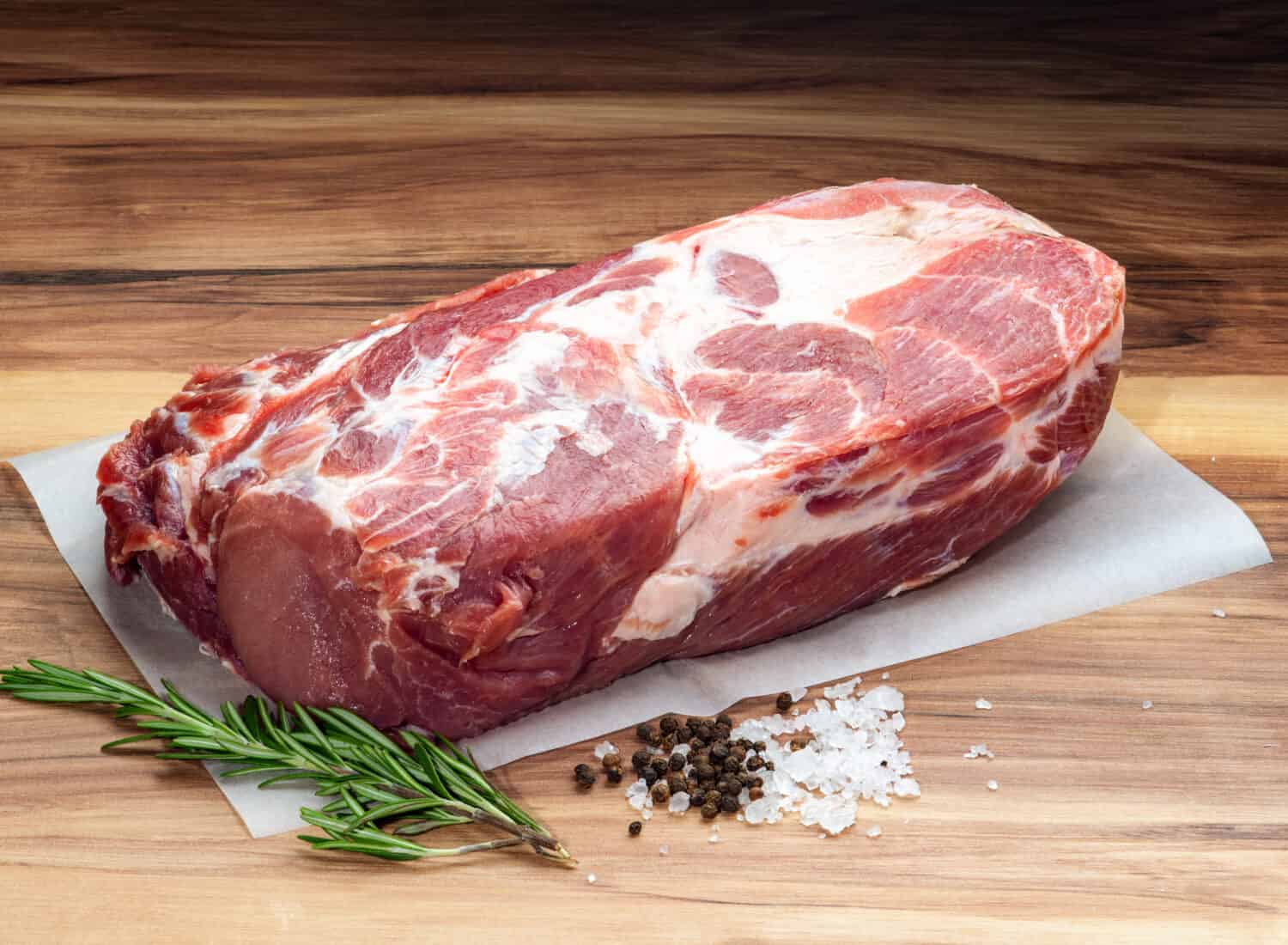
©Robert Stedman Pte Ltd/Shutterstock.com
Choosing Between Pork Roast vs. Pork Shoulder?
When choosing between pork roast and pork shoulder, consider what kind of dish you plan to prepare. Also, consider the cooking method. Since pork roast is a leaner cut of meat with a finer texture, it is best for quick roasting, grilling, or pan-searing. Moreover, pork roast cooks faster and has less fat.
On the other hand, pork shoulder is a great choice for dishes like pulled pork sandwiches or stew. This meat requires longer cooking times to break down collagen and add texture. Additionally, pork shoulder is less tough when it is slow-cooked or braised.
What Are the Pros and Cons of Pork Roast vs. Pork Shoulder?
Pork roast is a leaner meat, making it a healthier choice for those watching their fat intake. However, less fat also results in slightly less juicy and flavorful meat. If you need to prepare meat in a hurry, pork roast is the better choice because you can grill, roast, or pan-sear it.
Since pork shoulder requires longer cooking times, it is less convenient if you are in a hurry. However, it has more fat than pork roast, so it is generally a more flavorful cut of meat. Another pro for pork shoulder is that it is a more cost-effective option if you are on a budget. This large cut of meat can make a variety of meals, from pulled pork sandwiches to stew.
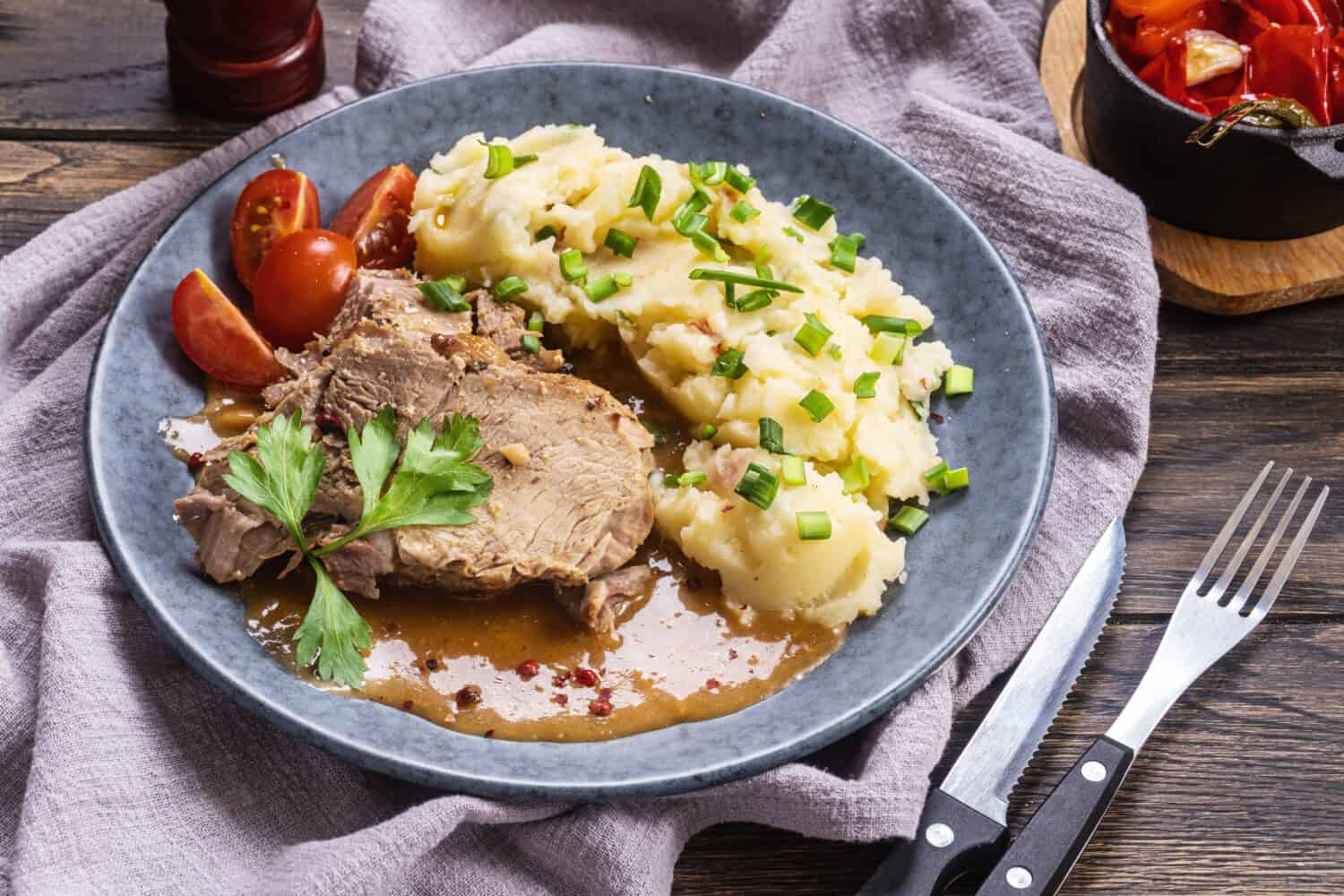
©yingko/Shutterstock.com
How to Prepare Pork Roast vs. Pork Shoulder
So, how do you prepare both pork roast and pork shoulder? For pork roast, you can either roast or grill it. To roast, preheat the oven to 350F. Cook the pork for twenty to twenty-five minutes per pound until it reaches 145F. For grilling, sear the pork on high heat. Then cook it for twenty to twenty-five minutes per pound on a cooler part of the grill.
Braising, slow cooking, and smoking are the three popular methods for cooking pork shoulder. To braise the pork, you need to brown the meat first and then simmer it in liquid for several hours. To slow cook, place the pork in a slow cooker or Dutch oven with seasonings and juice. Then cook it on low heat for around six to eight hours until it falls apart. To smoke the meat, cook the pork shoulder with low heat and smoke for several hours. This method gives the meat a rich, smoky flavor.
You can serve pork roast and pork shoulder in a variety of ways. Pork roast is delicious with roasted vegetables and potatoes. Use the leftovers for sandwiches or even tacos. With pork shoulder, you can use the meat as a filling for quesadillas and nachos. And, of course, it can be used to make a pulled pork barbecue sandwich, best enjoyed with coleslaw and pickles.
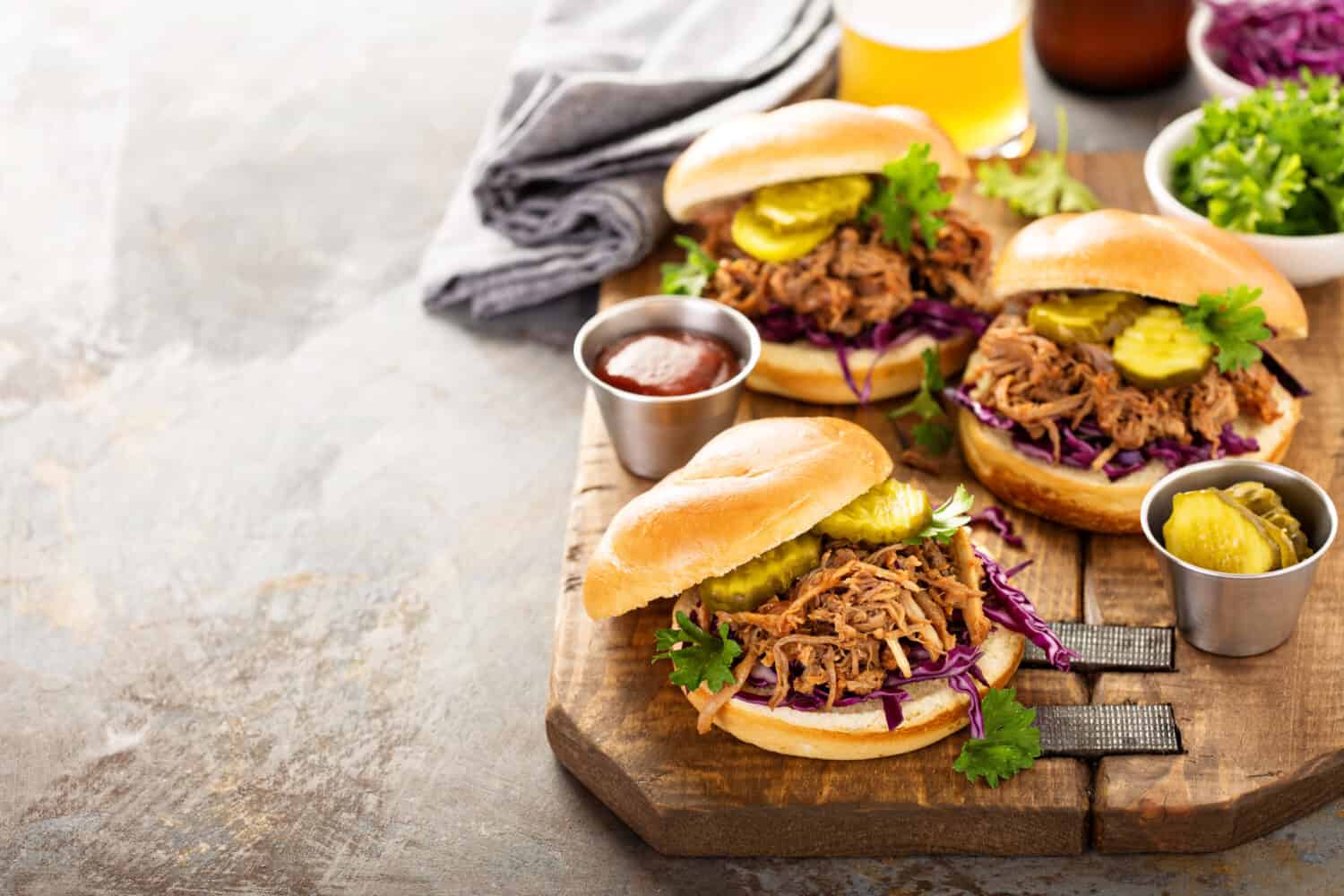
©Elena Veselova/Shutterstock.com
Pork Roast vs. Pork Shoulder: Recipes and Serving Ideas
Now that we understand the difference between these two pork cuts, here are some ideas from Moms Who Think for recipes and the best sides for pork.
- The Best Crock Pot Pulled Pork Recipe – Easy and delicious, try this crock pot pulled pork recipe.
- Honey Mustard Pulled Pork – The honey mustard flavoring in this dish gives pulled pork a sweet and tangy flavor.
- Pork and Potatoes with Tomato Relish – If you love pork and tomatoes, this dish with a side of tomato relish will hit the spot.
- Pork Chops Divine – The two main ingredients in this recipe are pork chops and cranberries.
- Pulled Pork Side Dishes – Here are some great recommendations if you are searching for sides for pulled pork.
- Side Dishes – If you are looking for healthy side dishes, here are fifteen healthy sides to serve with pork.
- Fifteen Rice Side Dishes for BBQ – If you are looking for rice side dishes to serve with your next BBQ pulled pork sandwich night, here are fifteen to consider.
Pork Roast vs. Pork Shoulder: Nutritional Information
The nutritional differences between pork roast and pork shoulder are mainly due to the fat and protein content of each type of meat. Pork roast is leaner, which means it has fewer calories and less fat. It also contains slightly less cholesterol than pork shoulder. However, pork roast has more protein than pork shoulder.
On the other hand, pork shoulder contains twenty-two grams of fat, including eight grams of saturated fat. Pork shoulder has slightly less zinc than pork roast. Both types of pork contain no carbohydrates and provide the same amount of vitamin B12. The following chart provides a complete breakdown of both types of meat.
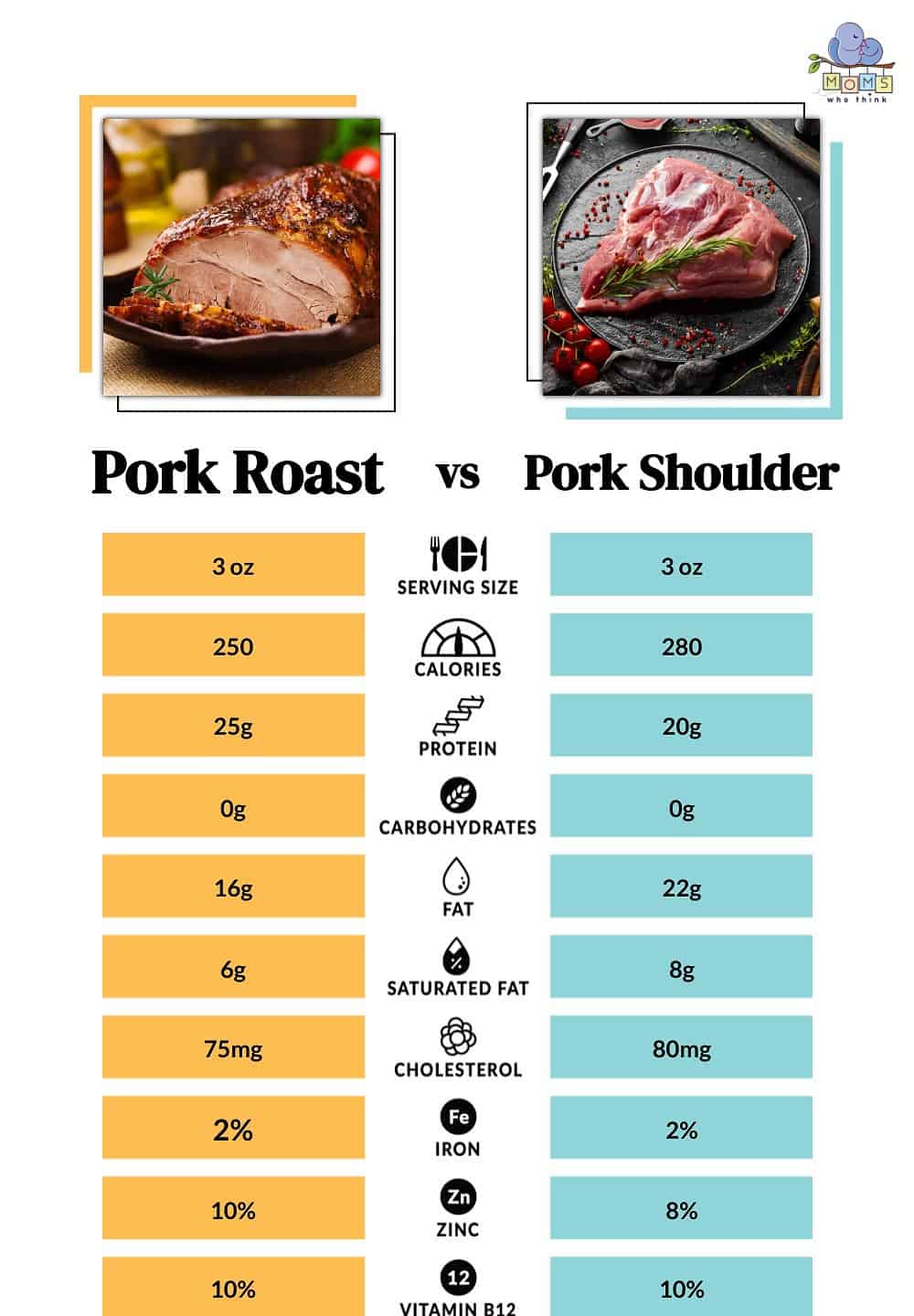
©
In Summary
When comparing pork roast and pork shoulder, it is important to consider the pros and cons of each. Pork roast is a leaner option with a finer texture, making it a great choice for quicker cooking methods like roasting or grilling. Overall, it is a healthier choice because it has less fat, but it may be less juicy.
On the other hand, pork shoulder is richer in flavor due to its higher fat content. It is perfect for slow cooking or braising. While it takes longer to cook, it is the more versatile meat cut. Furthermore, pork shoulder tends to be the cheaper option. Since it is a larger cut of meat, you may be able to get more meals out of it. Ultimately, your preferences for leanness, cooking time, and the type of dish you want to prepare will determine whether you should choose pork roast or pork shoulder for your meal.
Recipe Card
Now that you know the difference between these different meats, why not try a tasty recipe? This juicy pork roast is perfect for a delicious weeknight dinner that your whole family will enjoy.
Print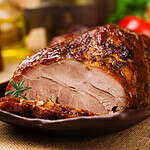
Herb Pork Roast with Potatoes
- Total Time: 1 hour
Ingredients
- 1 teaspoon minced garlic
- 2 teaspoons chopped dried rosemary
- 1 1/2 teaspoons salt
- 1 teaspoon pepper
- 1 (3-4 pound) boneless pork loin roast
- 4–6 medium red-skinned potatoes, peeled and quartered
- 2 Tablespoons olive oil
- 1 teaspoon dried thyme
Instructions
- Preheat the oven to 325 degrees F.
- Mix the garlic, rosemary, 1 teaspoon of salt, and ½ teaspoon of pepper in a small bowl. Rub the pork loin with the mixture and place the pork on a rack in a shallow roasting pan.
- Roast for 50 minutes.
- Meanwhile, cover the potatoes with water in a saucepan, bring to a boil, and cook for about 10 minutes until barely tender. Drain and let cool.
- Toss the potatoes with the olive oil, thyme, remaining ½ teaspoon of salt, and remaining ½ teaspoon of pepper in a large bowl.
- Place the potatoes around the pork loin and roast for an additional 45 to 60 minutes or until the pork registers at least 155 degrees F on a meat thermometer.
- Cover the roast with foil and let stand for about 15 minutes before slicing.
- Prep Time: 10 minutes
- Cook Time: 50 minutes
- Category: Main Course
- Method: Roasting
- Cuisine: American
The image featured at the top of this post is ©Angelika Heine/Shutterstock.com.
